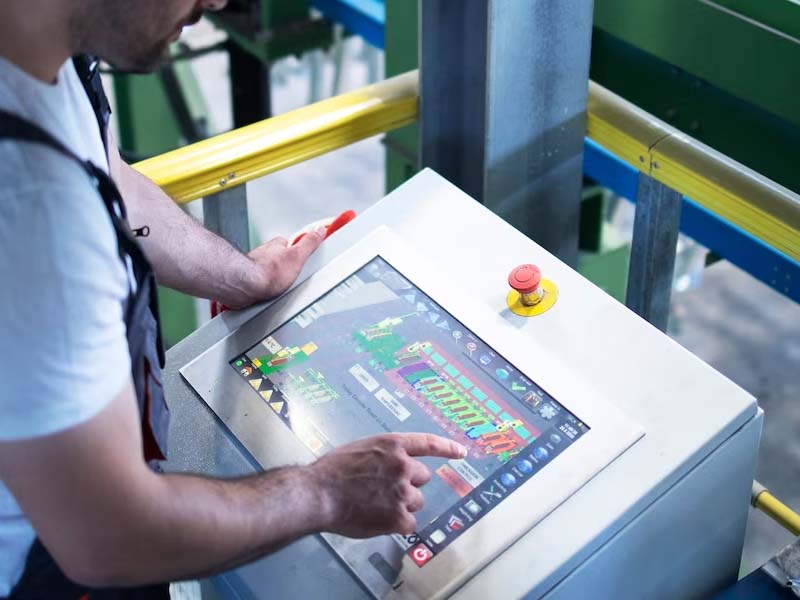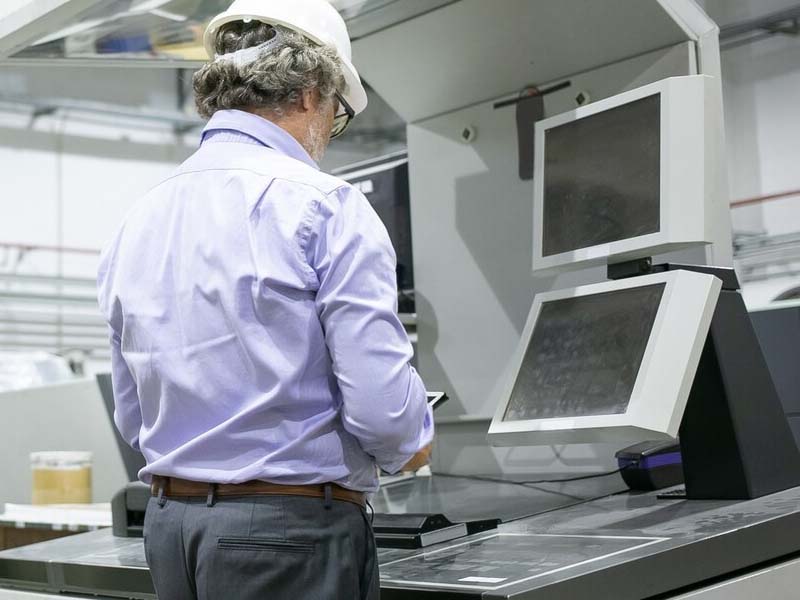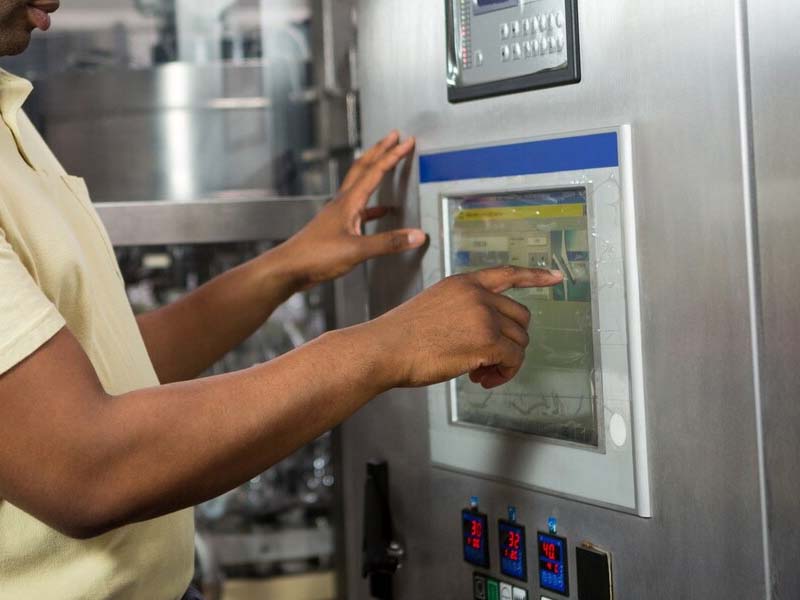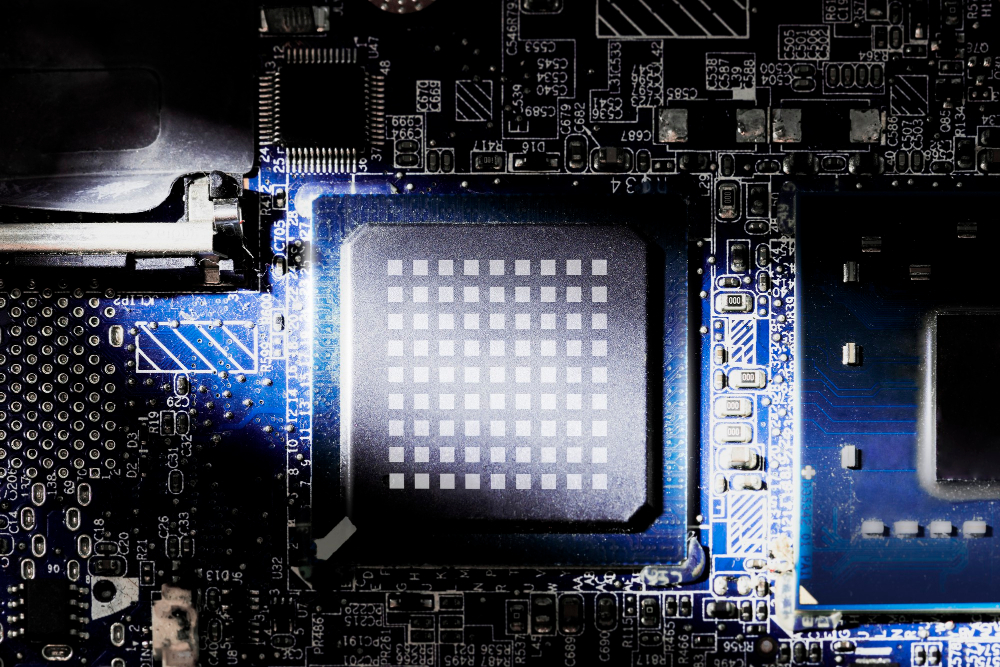Medical-grade industrial monitors are purpose-built, ruggedized, and meticulously designed to meet the stringent requirements of healthcare and industrial environments. Their critical role in these sectors cannot be overstated, as they provide the visual interface through which healthcare professionals diagnose patients and industrial operators manage complex processes.
In the fast-evolving landscape of healthcare and industrial sectors, precision and reliability are of paramount importance. At the heart of both these domains lies a technology that often goes unnoticed but plays an indispensable role – Industrial Box PCs and medical-grade industrial monitors. These specialized displays and computing units are not your typical screens and computers; they are the unsung heroes, diligently working behind the scenes to ensure critical information is presented accurately and without fail.
Understanding Medical-Grade Industrial Monitors
Medical-grade industrial monitors are a specialized category of display devices designed to meet the exacting standards of the healthcare and industrial sectors. They are purpose-built to function reliably in demanding environments where standard monitors would be inadequate. These monitors share unique characteristics and have specific requirements that set them apart:
Definition: What Are Medical-Grade Industrial Monitors?
Medical-grade industrial monitors are displays engineered for use in settings where precision, durability, and compliance with stringent regulations are essential. They are designed to provide high-quality images and information while withstanding the rigors of healthcare facilities and industrial operations.

Unique Characteristics and Requirements
Durability and Reliability:
-
- Ruggedized Construction: These monitors are built with robust, industrial-grade materials and reinforced enclosures to withstand physical stress, such as accidental impacts and vibrations.
- Resistance to Harsh Conditions: They are designed to endure exposure to dust, moisture, and temperature variations that are common in industrial environments, ensuring uninterrupted operation.
High-Resolution Displays:
-
- Precision Imaging: Medical-grade monitors feature high-resolution screens that allow for precise and detailed visualization. This is crucial for medical imaging, where accuracy can be a matter of life and death, and for industrial applications that demand precision.
Accurate Color Reproduction:
-
- Color Calibration: In the healthcare sector, accurate color reproduction is vital for radiology and pathology, ensuring that medical images are interpreted correctly. These monitors often feature calibration tools to maintain consistent and accurate colors over time.
Regulatory Compliance:
-
- Adherence to Industry Standards: Medical-grade industrial monitors are required to meet rigorous industry standards and regulatory certifications. For healthcare, this includes compliance with FDA 510(k) and DICOM Part 14 for radiology displays, ensuring they provide accurate and consistent images.
- Industrial Standards: In industrial settings, monitors may need to adhere to specific industry standards, depending on the application, to guarantee reliability and safety.
Longevity and Total Cost of Ownership:
-
- Extended Lifespan: These monitors are designed to have a longer operational life, reducing the frequency of replacements and lowering the total cost of ownership over time.
- Reduced Downtime: Reliability is a key requirement to minimize downtime, making them ideal for continuous industrial processes and critical healthcare applications.
In summary, medical-grade industrial monitors stand out due to their robust build, precise imaging capabilities, adherence to regulations, and long-term cost-effectiveness. Their unique characteristics make them essential tools in healthcare and industrial sectors, where accuracy, reliability, and durability are non-negotiable. Whether it’s a surgical suite, a manufacturing floor, or a laboratory, these monitors play a pivotal role in ensuring that critical information is delivered with the utmost accuracy and consistency.
Benefits of Medical-Grade Industrial Monitors
Medical-grade industrial monitors offer a range of benefits that are indispensable in healthcare and industrial settings. Here are the key advantages of using these specialized displays:
A. Reliability and Durability:
- Built for Harsh Industrial Environments:
- Medical-grade industrial monitors are constructed to thrive in demanding environments. They are engineered to withstand conditions that would compromise the functionality of standard displays.
- Resistance to Dust, Moisture, and Physical Damage:
- These monitors feature sealed and ruggedized enclosures to protect against dust and moisture ingress. In industrial settings, this shields them from the contaminants often present in the air.
- They can endure physical impacts and vibrations without succumbing to damage, making them ideal for applications where robustness is essential.

B. Image Quality and Precision:
- High-Resolution Displays:
- High-resolution screens are crucial for detailed and precise visualizations in both medical and industrial applications. Whether it’s the fine details in a medical scan or intricate industrial processes, high resolution ensures critical information is not missed.
- Accurate Color Reproduction:
- In medical imaging, accurate color reproduction is paramount for the correct interpretation of radiological and pathological images. Medical-grade monitors are calibrated to maintain consistent and accurate colors over time, ensuring the reliability of diagnoses.
C. Compliance with Regulatory Standards:
- Adherence to Industry Regulations:
- Medical-grade monitors are designed with strict adherence to industry-specific standards and regulations. In healthcare, this includes compliance with FDA 510(k) for safety and effectiveness, which is vital to ensure patient safety.
- For radiology, adherence to DICOM Part 14 standards is essential, as it guarantees that the displays can accurately render grayscale images, making them suitable for critical radiological interpretations.
- Certifications:
- The significance of certifications like FDA 510(k) and DICOM Part 14 cannot be overstated. These certifications provide assurance that the monitors meet the highest standards of quality and reliability, making them reliable tools in healthcare and industrial settings.
D. Longevity and Total Cost of Ownership:
- Investment in Long-Term Cost Savings:
- While the upfront cost of medical-grade monitors may be higher than standard displays, the investment often translates into long-term cost savings.
- The durability and longevity of these monitors result in reduced maintenance and replacement expenses, making them a cost-effective choice over their lifecycle.
- Reduced Need for Frequent Replacements:
- The reliability and extended lifespan of medical-grade industrial monitors reduce the need for frequent replacements. This minimizes downtime in critical operations, ensuring continuous productivity and patient care.
In conclusion, medical-grade industrial monitors are pivotal tools in healthcare and industrial settings due to their unmatched reliability, precision, compliance with regulations, and long-term cost-effectiveness. Their ability to thrive in challenging conditions while consistently delivering high-quality images and information makes them indispensable for applications where accuracy, durability, and compliance are non-negotiable.
Applications of Medical-Grade Industrial Monitors
Medical-grade industrial monitors find diverse and critical applications in a range of sectors where precision, reliability, and compliance are paramount. Here are some key areas where these specialized displays play a vital role:

A. Healthcare Sector:
- Medical Imaging:
- Medical-grade monitors are the cornerstone of accurate diagnosis and treatment in medical imaging. They are used to display images from X-rays, MRIs, CT scans, and other diagnostic modalities. Their high resolution and accurate color reproduction ensure that medical professionals can make precise diagnoses.
- Patient Monitoring:
- In hospitals and intensive care units, these monitors are employed for real-time patient monitoring. They display vital signs, ECG readings, and other critical data, allowing healthcare providers to track patient health and respond promptly to any changes.
- Surgical Environments:
- During surgical procedures, medical-grade monitors are used to display surgical imaging, endoscopic video feeds, and patient information. Their reliability and high-quality displays aid surgeons in making precise decisions and performing minimally invasive procedures.
B. Pharmaceutical and Laboratory Settings:
- Pharmaceutical Research:
- Medical-grade monitors are indispensable in pharmaceutical research and development. They display results from complex experiments and analytical instruments, allowing researchers to analyze data accurately and make informed decisions.
- Quality Control:
- In pharmaceutical manufacturing, these monitors are used for quality control, ensuring that production processes meet strict standards. They display critical data related to drug formulation, batch consistency, and quality assurance.
- Analytical Laboratories:
- Analytical laboratories rely on these monitors for data analysis and sample testing. They help researchers and analysts visualize complex data sets and ensure the accuracy of their findings.
C. Manufacturing and Industrial Automation:
- Process Control:
- In manufacturing, medical-grade monitors play a key role in process control. They display real-time data from automated systems, allowing operators to monitor and adjust processes to maintain quality and efficiency.
- Chemical Processing:
- In chemical and petrochemical industries, these monitors are used for monitoring and controlling complex chemical processes. Their robust design ensures they can withstand the often harsh and chemically corrosive environments.
- Quality Assurance:
- They are integral in quality assurance processes, where visual inspections are essential. These monitors help operators detect defects or inconsistencies in production, ensuring high-quality products.
- Industrial Control Rooms:
- Industrial control rooms utilize medical-grade monitors for overseeing entire manufacturing or production facilities. Their reliability is critical in these mission-critical control environments.
D. Emergency Response and Defense:
- Emergency Response Centers:
- In emergency response and 911 call centers, these monitors are used for dispatching and coordinating responses. They provide real-time information and video feeds from the field, enabling rapid decision-making during emergencies.
- Military Operations:
- In military applications, medical-grade monitors are deployed in command and control centers. They offer high-resolution, rugged displays for situational awareness, intelligence analysis, and strategic decision-making.
- Reliability and Durability:
- In both emergency response and military settings, the reliability and durability of these monitors are crucial. They can operate in demanding conditions and continue functioning even in challenging field environments.
Considerations for Choosing Medical-Grade Monitors
Selecting the right medical-grade monitor for specific applications is crucial to ensure optimal performance and compliance. Here are some key tips and factors to consider when making this important decision:
1. Application-Specific Requirements:
- Identify Your Needs: Clearly define the specific requirements of your application. Determine the necessary resolution, color accuracy, and environmental conditions the monitor will face. Different applications may demand different specifications.
2. Regulatory Compliance:
- Ensure Regulatory Compliance: Depending on your industry, verify that the monitor complies with the relevant industry standards and regulations. For healthcare, compliance with FDA 510(k) and DICOM Part 14 standards is critical.
3. Image Quality:
- Resolution: Consider the required resolution for your application. Higher resolutions are crucial for medical imaging, while some industrial settings may have different needs.
- Color Accuracy: In medical imaging, accurate color reproduction is essential for diagnosis. Ensure the monitor has color calibration capabilities.
4. Durability:
- Environmental Considerations: Evaluate the environmental conditions in which the monitor will be used. If it will be exposed to dust, moisture, or extreme temperatures, ensure the monitor is ruggedized to withstand these conditions.
5. Longevity and Total Cost of Ownership:
- Lifespan: Consider the expected lifespan of the monitor. Longer lifespan often translates to lower total cost of ownership due to reduced maintenance and replacement costs.
6. Connectivity:
- Compatibility: Ensure that the monitor is compatible with the existing hardware and software systems in your application. Check for available connectivity options, such as HDMI, DisplayPort, or USB.
7. Ergonomics:
- Mounting and Positioning: Determine how the monitor will be mounted or positioned in your application. Consider the flexibility and adjustability of the mounting options to achieve the best viewing angles.
8. Warranty and Support:
- Warranty: Review the warranty provided by the manufacturer. A longer warranty period can be an indicator of the manufacturer’s confidence in the product’s reliability.
- Customer Support: Consider the availability and responsiveness of customer support. In case of technical issues, efficient support is crucial.
9. Budget:
- Cost-Benefit Analysis: Weigh the upfront cost of the monitor against the long-term benefits and savings it can provide. Consider the trade-off between cost and quality.
10. User Feedback:
- Reviews and Recommendations: Read reviews and seek recommendations from other professionals in your field who have experience with similar applications. They can provide valuable insights into the performance and reliability of specific models.
11. Future Scalability:
- Scalability: Consider whether the chosen monitor can accommodate future growth or changes in your application. It’s advantageous if the monitor can adapt to evolving needs.
12. Brand Reputation:
- Manufacturer Reputation: Research the reputation of the manufacturer. Well-established and reputable manufacturers are more likely to produce high-quality and reliable products.
13. Maintenance and Calibration:
- Calibration Tools: If color accuracy is crucial, check whether the monitor offers calibration tools or if it is compatible with calibration hardware and software.
14. Energy Efficiency:
- Energy Consumption: Evaluate the monitor’s energy efficiency, especially if you are operating in an environment where energy costs or sustainability are concerns.
Taking these considerations into account will help you choose the right medical-grade monitor that aligns with the specific requirements and challenges of your application. Whether it’s for healthcare, industrial, or research purposes, making an informed decision is essential to ensure optimal performance and reliability.

Conclusion
Medical-grade industrial monitors and Box PCs are indispensable in healthcare and industry, offering key benefits and applications. These displays and computing units provide reliability, durability, high image quality, and regulatory compliance. Their longevity translates into cost savings.
Explore these monitors for your industry or healthcare needs. Tailoring your choice to specific requirements can enhance efficiency and quality. These monitors are silent champions, driving excellence in sectors where precision, reliability, and compliance are paramount, benefiting both professionals and those they serve.

